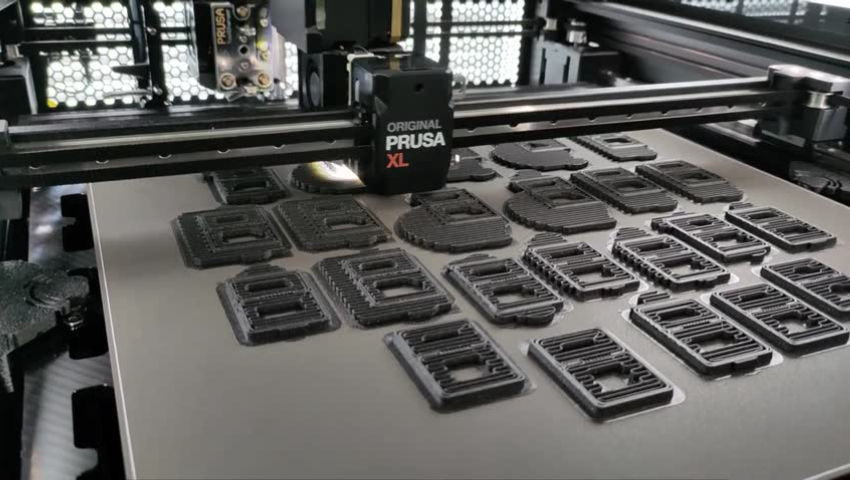I owned a Prusa Mk3 (bed slinger) and currently own a Voron 2.4 (CoreXY with flying gantry) and a Prusa Core One (CoreXY with static gantry), my 2 cents:
Bed slingers are cheap and reliable. Their layout makes sure the axis are always rigid and aligned or at the very least they are very easy to align if they are not.
They do have a giant disadvantage though which is shaking the print on the Y axis. For small prints that is negligible but as you go higher it becomes a disaster quite quickly. I could never print thin and high support structure along the X axis on my Mk3, it would just tip over or break once it reaches a certain height. Same issue with lithophanes. If I printed them on the wrong axis, they would fail or become distorted as the bed shakes.
I bought and built the Voron 2.4 primarily because Prusa did not release a CoreXY for such a long time and I did not want to have that same issues again since lots of my prints are pretty tall and thin.
In principle, the flying gantry is my favorite. The bed sits totally still and only the head moves, ideal for thin and tall prints. It’s also really cool to see the flying gantry level itself, almost like magic.
There’s one issue with flying gantries that I encountered multiple times on my Voron, which is that it needs very precise calibration in order to produce accurate results.
Due to the flying gantry there are just so many variables that can influence the end result. It’s almost impossible to determine exactly where the issue is coming from without much time for diagnosing. Skewed frame, skewed gantry, skewed Y axis, wrong or uneven belt tension and so much more. It’s a real pain to diagnose print issues. My Voron still has a very tiny skew and I have no idea where it’s coming from.
The Core One has a static gantry, which is in my opinion the best design I have used so far. Compared to the usual static gantry like on the Voron Trident, the Core One gantry has one solid 4 sided steel piece which impacts view a little bit but you can be certain that the gantry is square.
This drastically reduces the amount of possible issues. It still needs almost perfect belt tensioning so the gantry does not skew but other than that the only other thing that needs to match is the alignment between bed and XY axis, that’s about it. It was incredibly easy to get the skew on my Core One kit to pretty much zero.
No more bed slingers for me and seeing the flying gantry once was enough. CoreXY with static gantry from now on until something better comes along.
There is no clear answer to what is better.
CoreXY:
- lower moving mass (benefit)
- stationary bed (benefit)
- compact dimensions, easy to build an enclosure (benefit)
- VERY long belts (downside) => you can upgrade to high pitch ball screw and servos (no longer coreXY) => even superior are linear induction motors like those used in pick and place machines but both options would cost significantly more (will never be seen on consumer printer).
bedslinger
- short belts are good for dimensional accuracy
- independent axis makes it easy to get a high rigidity with good dampening characteristics further benefiting the print quality
- bed is moving this is a significant limitation for fragile/tall prints. You can pretty easily simulate the distortion this will cause. To keep it fair: Even with coreXY there will be some forces/drag from the molten material/nozzle to the printed parts.
TL;DR/Opinion?
- CoreXY it is for the consumer market. Those machines look nicer, are smaller and print quality matches expectations.
- For the (ultra) high end it gets blurry. There are outstanding bed slinger options out there made of granite frames, precision linear rails, and so on. These machines aren’t designed for high speed but for ultimate reliability and quality with price tages in the $10k+ range for a 200x200mm machine.
I think the pros/cons come down to what you need a printer for. If you print mostly flat things, a bedslinger is fine. If you print large parts with sketchy bed attachments like I often do, a coreXY makes a lot more sense. You have no idea the amount of filament I wasted on giant brims and rafts to keep parts from flying off the sheet - not to mention the time it takes to print them.
And then of course, the Prusa XL in particular can be outfitted with up to 5 separate extruders. It has nothing to do with coreXY but it was a big part of why we bought it.
Prusa XL is a difficult machine.
On the one hand, it pushes toolchangers to the mainstream. On the other hand, it is utterly unreliable for it’s price.
Paying $5k for a printer and then finding out that the printed parts they used deform causing repairs, the heatbed title issues and some more and this is already after a massive delay (launched a few years later than they initially “announced”).
The previous goat of toolchangers was the E3D toolchanger. While not perfect it at least had the build quality to match its price point (btw. lower cost than the Prusa XL) and if you fix one minor design oversight they are reliable.
So far our (new) machine is performing well. We’ll see how it fares in the long run. That’s one of the advantages of having my company purchase it: it’s getting a beating for work purposes, so I can test it properly before buying one for myself 🙂
I have found that I can actually get more reliable quality out of bedslingers just because the frame tends to be more rigid.
However they are definitely slower. And if you are printing certain tall, narrow models, the bed movement can cause print failure from the motion knocking it off the build plate.
One of the most prevalent mods for my old i3 clone is a z-brace, so…
I have z braces on my bear modded mk3s too, things reliable as heck and easy to service.
The Prusa XL doesn’t lack rigidity. That thing is build like a tank. It feels a lot sturdier than the Prusa Mk4.
Then again, I guess they’re not in the same category…
One difference is machine size. A bed slinger needs enough room to sling the bed around. I have a Snapmaker Artisan and its humongous because of this.
That’s true. The Prusa XL is larger than our Prusa Mk4 with the enclosure, but still fairly comparable. However, the XL’s build volume is kind of… staggering in comparison.
At that printing speed I doubt it makes any difference if the bed is moving or stationary :) Surely the Prusa XL could go much faster than this?
With those flat plates I’m printing, there’s zero difference. But when I have to print tall thin things, like for example a long tube to adapt diameters, it’s doable without any support on the XL, while I need a gigantic raft and glue on the Mk4 - and even then, it shakes enough that the diameter is not that great at the top.
Also, the XL has two heads, so I can print TPU with PLA support.
I haven’t tried pushing the speed yet. I’ve been playing with multi-color and multi-material prints, as well as long tall thin prints that were kind of impossible on the Mk4. And when I’m not playing with that, I’m running it almost 24/7 because I have to produce sets of parts for our production floors asap and each set takes about 20 hours.
But soon the machine will be more available and I’ll play with it some more.
Was just thinking that if the goal of your video was to showcase the difference between the bed slinger and the corexy, then it would’ve made a stronger point if you took advantage of its full potential. The MK4 even looks faster in the video, but I suspect it could be the angle and that the bed moving making its motions more visible.
Speed on a core-xy, especially acceleration, can be a ton higher than a bed slinger. I have a 350mm^3 Voron keep a 0.6mm nozzle on it, and print with 0.9mm line width and 0.3mm layer heights. I have a Rapido HF and volumetric flow winds up being my bottleneck most of the time.
Also note that when you’re going fast, material matters a lot. I can melt ASA faster than PLA/PETG. But… ASA can be a bit more melty so things like overhangs can suffer. And the whole needing a heated chamber thing.






